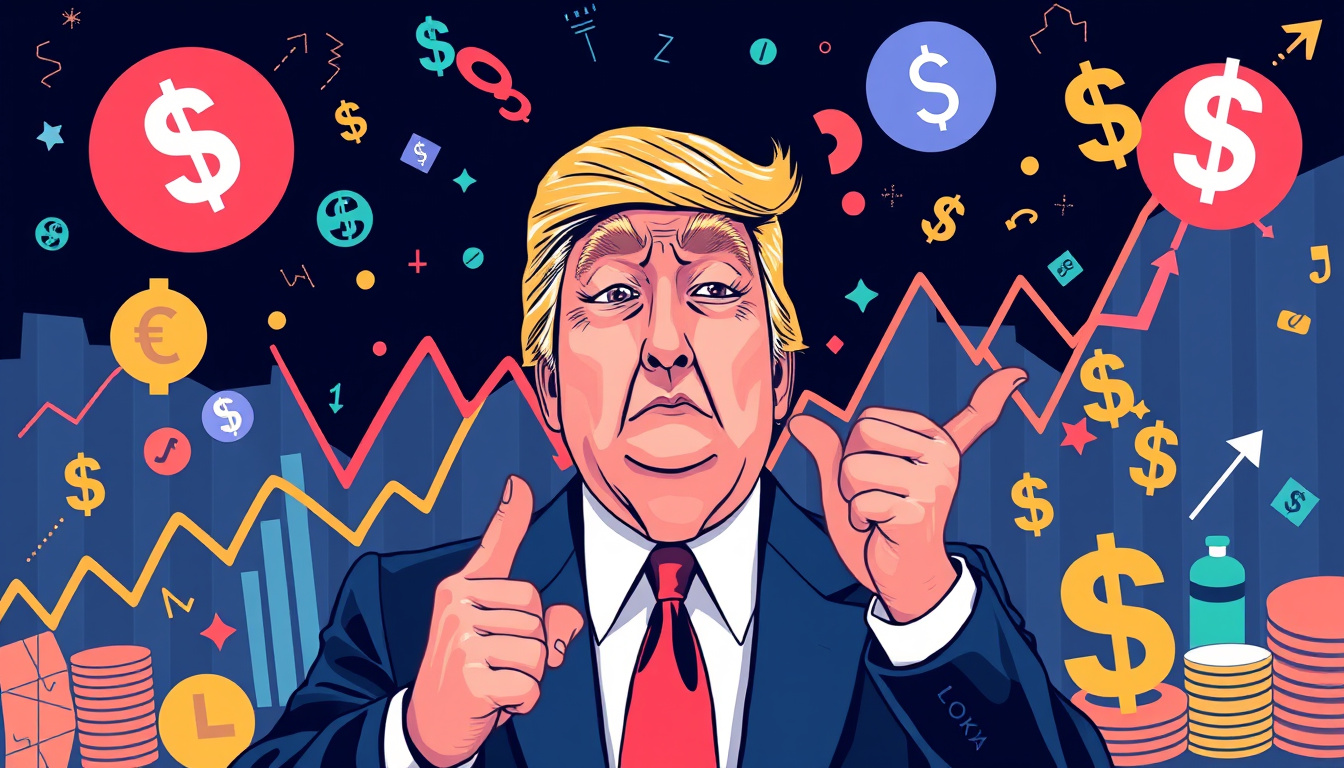Table of Contents
On April 14, Bitcoin (BTC) marked a significant milestone with a remarkable
6.79% price increase over the week, largely influenced by declining US Treasury yields and ongoing trade tensions between the United States and China.
This surge highlights the evolving landscape of Bitcoin as a desirable asset in fluctuating economic conditions.
As investors seek alternatives to traditional fixed-income assets amid falling yields, Bitcoin's appeal has grown, especially following a resurgence from a yearly low of $74,500 to a high of $86,100 between April 9 and 13—its strongest weekly performance since January.
However, the relationship between Bitcoin, economic indicators, and global trade dynamics remains complex, prompting a deeper dive into the factors influencing this cryptocurrency's recent surge.
In this article, we will explore the economic conditions buoying Bitcoin's momentum, delve into technical analyses, and provide a future outlook for this leading cryptocurrency.
Crypto News, Articles and Reports

Key Takeaways
- Bitcoin surged by
6.79% amid falling US Treasury yields and trade tensions. - Recent tariff exemptions may boost Bitcoin as a risky asset but could lead to price volatility.
- Technical analysis indicates bullish momentum for Bitcoin, with resistance levels around $88,000 to $90,000.
Economic Factors Influencing Bitcoin's Surge
The recent surge of Bitcoin (BTC) can largely be attributed to significant economic factors, particularly fluctuations in US Treasury yields and geopolitical tensions surrounding trade policies.
On April 14, Bitcoin witnessed a remarkable
6.79% increase over the week, driven by a notable decline in Treasury yields; the 10-year yield decreased to
4.40%, while the 2-year yield dropped to
3.88%.
This decline followed the announcement of tariff exemptions by the Trump administration aimed at bolstering domestic production in technology industries.
As Bitcoin rebounded from a yearly low of $74,500 to a peak of $86,100 within a matter of days, it marked the asset's most impressive weekly performance since January.
The drop in Treasury yields has made fixed-income assets less appealing, subsequently encouraging investments in riskier assets like Bitcoin.
However, the durability of tariff exemptions raises questions amidst ongoing US-China trade tensions, which inherently carry the risk of further price volatility in the cryptocurrency market.
Moreover, Bitcoin's status as a potential inflation hedge is under intense discussion, particularly as inflation rates have recently shown a decline—with the Consumer Price Index (CPI) reporting a
2.4% year-over-year rate for March 2025 compared to
2.8% in February.
Technical analysis suggests Bitcoin is currently encountering resistance in the $88,000 to $90,000 range.
Yet, the asset appears to maintain a bullish momentum as it remains above its 50-week moving average.
Additionally, the narrowing of the Perpetual-Spot Gap on Binance indicates a growing buyer momentum which historically precedes price rallies.
While there is optimism for Bitcoin to reach $90,000, the fluctuations in tariff policies and overarching economic pressures could significantly affect its trajectory in the near future.
Technical Analysis and Future Outlook for Bitcoin
In analyzing Bitcoin's (BTC) performance, particularly after the recent surge, it is crucial to consider both the broader economic landscape and specific technical indicators.
Following a significant dip in U.S.
Treasury yields and the announcement of tariff exemptions, Bitcoin gained significant ground, recovering from a yearly low of $74,500 to an impressive $86,100 within just a few days.
This momentum is supported by the cryptocurrency's ability to attract investment as traditional fixed-income assets become less appealing, especially when yields are low.
Furthermore, market participants are closely monitoring potential resistance levels in the $88,000 to $90,000 range.
The persistence of Bitcoin above its 50-week moving average suggests underlying bullish momentum, while historical patterns in the Perpetual-Spot Gap imply an increasing appetite among buyers.
However, given the uncertainties tied to ongoing geopolitical tensions and economic policy changes, investors should approach with caution, considering both the promising outlook and the risks that could influence Bitcoin's future price trajectory.
By Wolfy Wealth - Empowering crypto investors since 2016
[highlight=transparent]⚡️Exclusive research[/highlight]
[highlight=transparent] 📈 Early signals[/highlight]
[highlight=transparent] 📬 Weekly reports[/highlight]
[highlight=transparent] Just what you need to win in crypto. [/highlight][highlight=transparent]Click [/highlight]Here
Disclosure: Authors may be crypto investors mentioned in this newsletter. Wolfy Wealth Crypto newsletter, does not represent an offer to trade securities or other financial instruments. Our analyses, information and investment strategies are for informational purposes only, in order to spread knowledge about the crypto market. Any investments in variable income may cause partial or total loss of the capital used. Therefore, the recipient of this newsletter should always develop their own analyses and investment strategies. In addition, any investment decisions should be based on the investor's risk profile.








